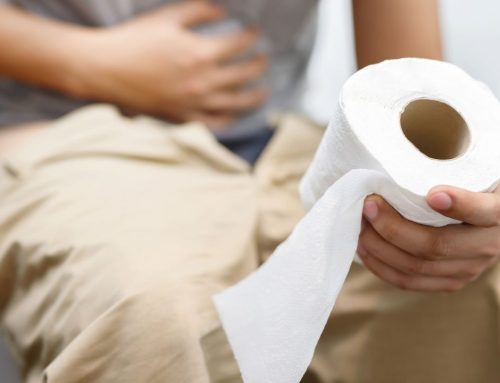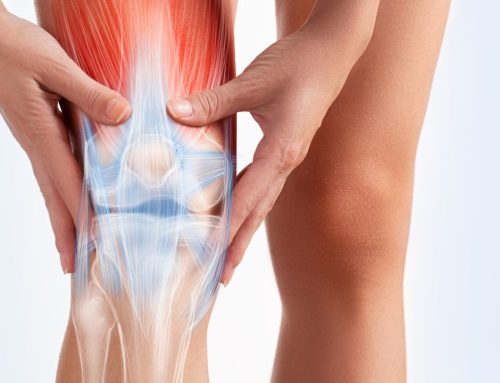
Top 5 mistakes after knee replacement
Undergoing knee replacement surgery is a significant decision that can improve mobility, reduce pain, and enhance overall quality of life for individuals with debilitating knee conditions. However, the success of the procedure and the recovery process depend not only on the surgery itself but also on the patient’s commitment to post-operative care and rehabilitation. Despite the potential benefits, there are common mistakes that patients may make during the recovery period that can impede progress and lead to complications. In this article, we will explore the top 5 mistakes after knee replacement. From neglecting physical therapy to returning to normal activities too soon, each of these errors can have a significant impact on recovery outcomes and long-term joint health. By understanding these pitfalls and learning how to navigate the post-operative period effectively, patients can optimize their recovery and achieve the best possible results following knee replacement surgery.
This article might interested you: why is mental health important
Top 5 mistakes after knee replacement
Recovering from knee replacement surgery requires careful attention to detail and adherence to post-operative instructions. Here are the top five mistakes to avoid after knee replacement:
- Neglecting Physical Therapy
- Ignoring Pain or Swelling
- Overdoing Activities
- Not Using Assistive Devices
- Returning to Normal Activities Too Soon
Neglecting Physical Therapy
Neglecting physical therapy after knee replacement surgery is a significant mistake that can hinder your recovery and long-term outcomes. Physical therapy plays a crucial role in restoring strength, flexibility, and function to the knee joint, as well as improving overall mobility and reducing pain.
Here are some reasons why neglecting physical therapy after knee replacement surgery is a mistake:
- Decreased Range of Motion: Without regular physical therapy exercises, scar tissue can build up around the knee joint, leading to stiffness and decreased range of motion. Physical therapy helps break down scar tissue and promotes proper healing, allowing you to regain full movement in your knee.
- Muscle Weakness: After surgery, the muscles surrounding the knee can become weak due to disuse and immobility. Physical therapy exercises are designed to strengthen these muscles, which are essential for supporting the knee joint and preventing future injuries.
- Prolonged Pain and Discomfort: Neglecting physical therapy can result in prolonged pain and discomfort in the knee joint. Physical therapy techniques such as manual therapy, stretching, and strengthening exercises can help alleviate pain and improve overall function.
- Increased Risk of Complications: Failing to participate in physical therapy increases the risk of complications such as blood clots, infections, and joint stiffness. Physical therapists are trained to monitor your progress and address any issues that may arise during the recovery process.
- Delayed Recovery: Ultimately, neglecting physical therapy can delay your overall recovery timeline and prolong your return to normal activities. Consistent participation in physical therapy sessions can expedite the healing process and help you achieve optimal outcomes following knee replacement surgery.
Ignoring Pain or Swelling:
Ignoring pain or swelling after knee replacement surgery is a common mistake that can have serious consequences for your recovery. While some degree of discomfort and swelling is normal in the initial stages of recovery, persistent or worsening pain and swelling should not be ignored. Here are some reasons why ignoring pain or swelling after knee replacement surgery is a mistake:
- Sign of Complications: Persistent pain or swelling may be a sign of complications such as infection, blood clots, or implant problems. Ignoring these symptoms can delay diagnosis and treatment, potentially leading to more severe complications.
- Delayed Healing: Pain and swelling can interfere with the healing process after knee replacement surgery. Ignoring these symptoms may prevent you from fully participating in rehabilitation exercises and physical therapy, which are essential for restoring strength, flexibility, and function to the knee joint.
- Decreased Mobility: Pain and swelling can limit your mobility and make it difficult to perform daily activities. Ignoring these symptoms may lead to decreased range of motion in the knee joint and prolonged difficulty with walking, standing, and other movements.
- Increased Discomfort: Ignoring pain and swelling can result in increased discomfort and reduced quality of life. Addressing these symptoms promptly can help alleviate discomfort and improve overall well-being during the recovery process.
- Risk of Complications: Untreated pain and swelling can increase the risk of complications such as stiffness, instability, and joint damage. Seeking prompt medical attention for persistent or worsening symptoms can help prevent these complications and support a successful recovery.
Overdoing Activities:
Overdoing activities after knee replacement surgery is a common mistake that can lead to complications and hinder your recovery. While it’s natural to want to resume normal activities as soon as possible, pushing yourself too hard can strain the newly replaced knee joint and increase the risk of injury. Here are some reasons why overdoing activities after knee replacement surgery is a mistake:
- Risk of Implant Damage: Overdoing activities can put excessive stress on the knee joint and surrounding tissues, potentially leading to damage to the implant or surrounding structures. This can result in pain, instability, and a need for additional surgical interventions.
- Delayed Healing: Excessive activity can interfere with the healing process after knee replacement surgery. The body needs time to recover and adapt to the new joint, and overdoing activities can disrupt this process, leading to prolonged pain, swelling, and discomfort.
- Increased Pain and Swelling: Overuse of the knee joint can cause increased pain and swelling, making it more challenging to engage in rehabilitation exercises and physical therapy. This can slow down progress and prolong the recovery period.
- Risk of Falls and Injuries: Overdoing activities increases the risk of falls and injuries, particularly during the early stages of recovery when the knee may be weaker and less stable. Falls can cause further damage to the knee joint and surrounding tissues, leading to setbacks in recovery.
- Long-Term Complications: Pushing yourself too hard during the recovery period can increase the risk of long-term complications such as stiffness, instability, and reduced range of motion in the knee joint. These complications can impact your ability to perform daily activities and may require additional treatment to address.
Not Using Assistive Devices:
Not using assistive devices, such as walkers, crutches, or canes, as recommended after knee replacement surgery is a mistake that can impede your recovery and increase the risk of complications. Here are some reasons why not using assistive devices when needed is a mistake:
- Risk of Falls: After knee replacement surgery, the knee joint may be weak and unstable, making it difficult to walk without support. Not using assistive devices when needed increases the risk of falls, which can lead to further injury or damage to the surgical site.
- Delay in Rehabilitation: Assistive devices are often prescribed to aid in rehabilitation and help you gradually regain strength and mobility in the knee joint. Not using these devices as recommended can delay the rehabilitation process and prolong recovery time.
- Increased Pain and Discomfort: Walking without support when the knee joint is still healing can cause increased pain and discomfort. Assistive devices help reduce the weight-bearing load on the knee joint, relieving pressure and minimizing pain during the early stages of recovery.
- Poor Gait Mechanics: Not using assistive devices can result in poor gait mechanics, such as limping or favoring one side of the body. This can lead to imbalances in muscle strength and coordination, potentially causing additional strain on the knee joint and increasing the risk of injury.
- Compromised Surgical Outcome: Failing to use assistive devices as recommended can compromise the surgical outcome and long-term success of the knee replacement. Adequate support and protection during the early stages of recovery are essential for optimizing healing and minimizing complications.
Returning to Normal Activities Too Soon
Returning to normal activities too soon after knee replacement surgery is a mistake that can jeopardize your recovery and increase the risk of complications. While it’s natural to want to resume your regular routine as quickly as possible, pushing yourself too hard can strain the newly replaced knee joint and impede the healing process. Here are some reasons why returning to normal activities too soon after knee replacement surgery is a mistake:
- Risk of Joint Damage: The knee joint needs time to heal and adapt to the new implant after surgery. Returning to high-impact or strenuous activities too soon can put excessive stress on the joint, increasing the risk of implant damage, instability, and premature wear.
- Delayed Healing: Overexerting yourself too early in the recovery process can delay the healing of soft tissues, muscles, and ligaments surrounding the knee joint. This can lead to prolonged pain, swelling, and discomfort, as well as slower progress in rehabilitation and physical therapy.
- Compromised Surgical Outcome: Returning to normal activities too soon can compromise the surgical outcome and long-term success of the knee replacement. Aggressive activity can disrupt the healing process and increase the risk of complications such as infection, stiffness, and implant failure.
- Increased Pain and Swelling: Pushing yourself too hard before your body is ready can exacerbate pain and swelling in the knee joint. This can make it more challenging to engage in rehabilitation exercises and physical therapy, hindering progress and prolonging recovery time.
- Risk of Falls and Injuries: Weakness, instability, and reduced range of motion in the knee joint during the early stages of recovery increase the risk of falls and injuries. Returning to normal activities too soon can further compromise balance and coordination, putting you at greater risk of accidents.
DÉJA TU CALIFICACIÓN
¿Te ha sido útil el artículo? Si te ha gustado, te invitamos a que nos dejes una calificación positiva de 5 estrellas.











